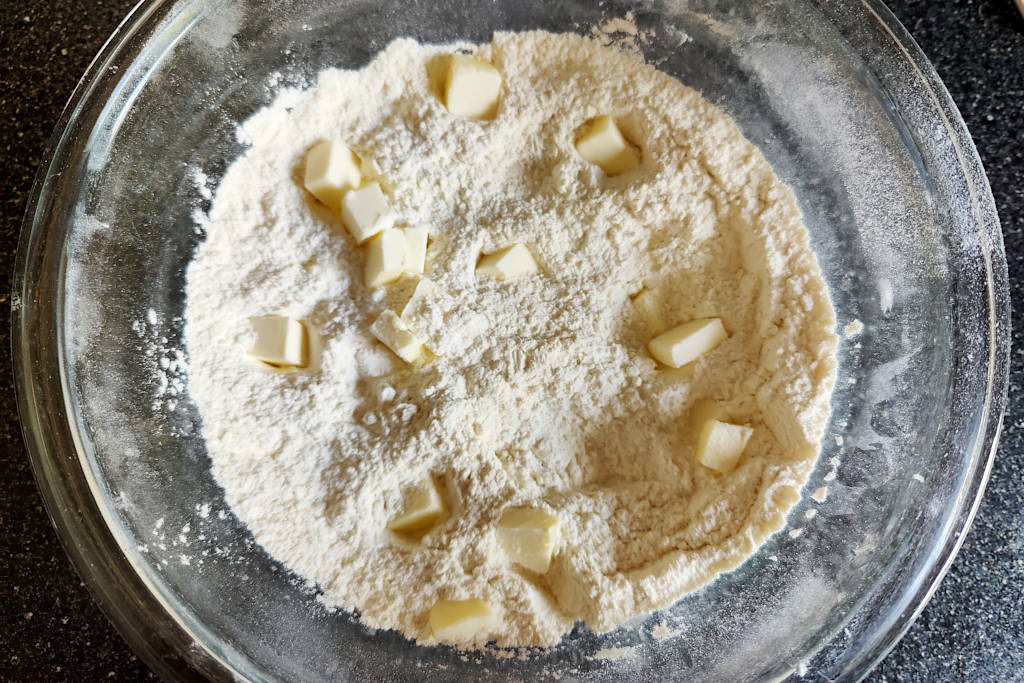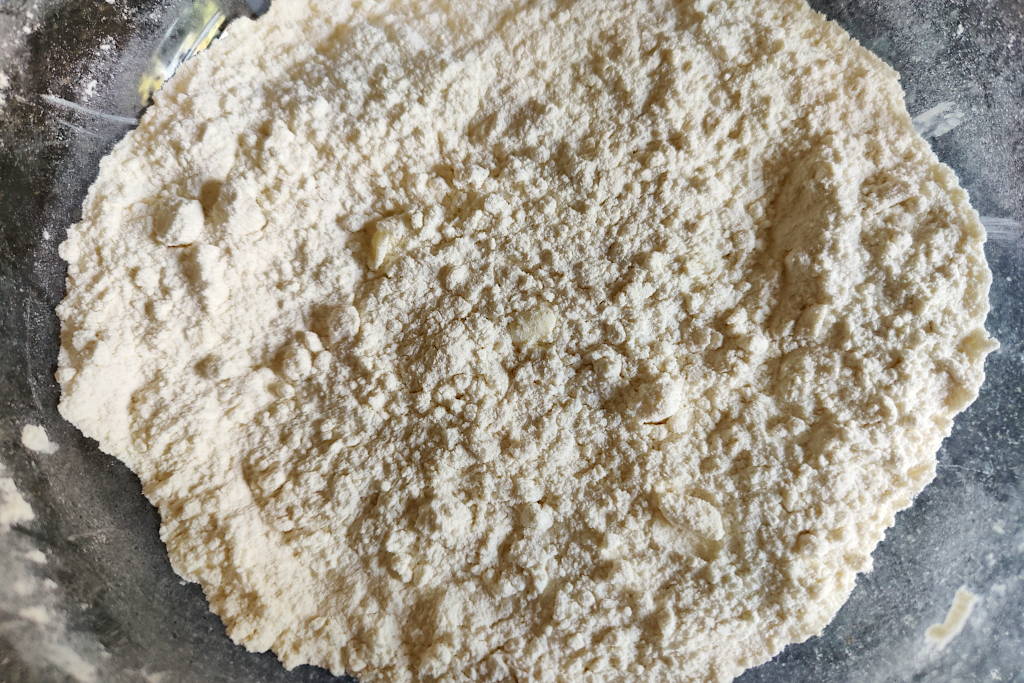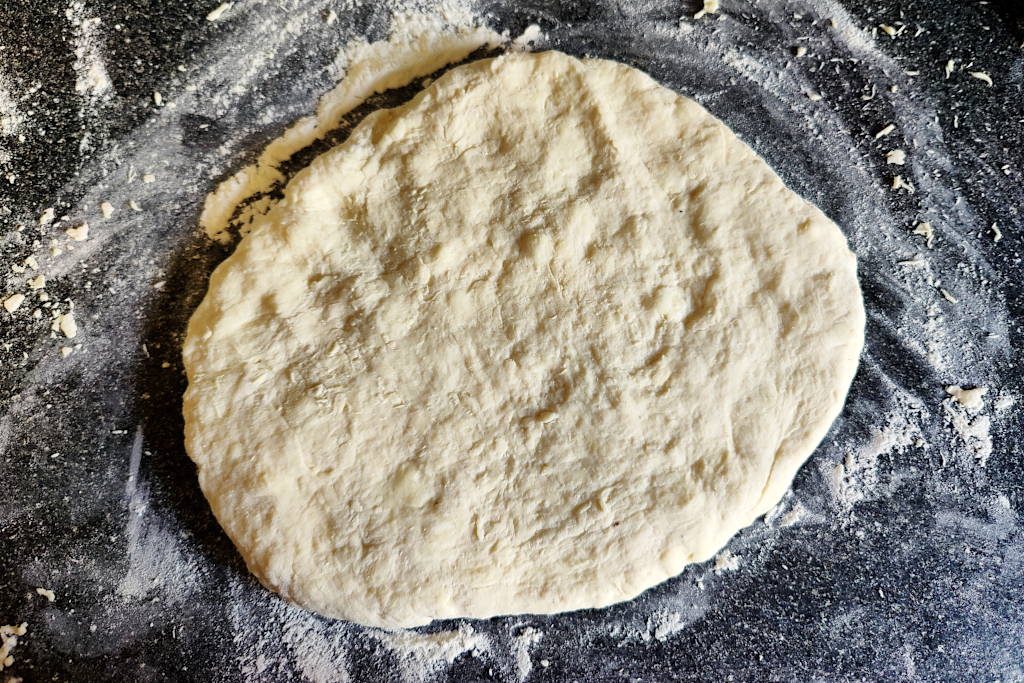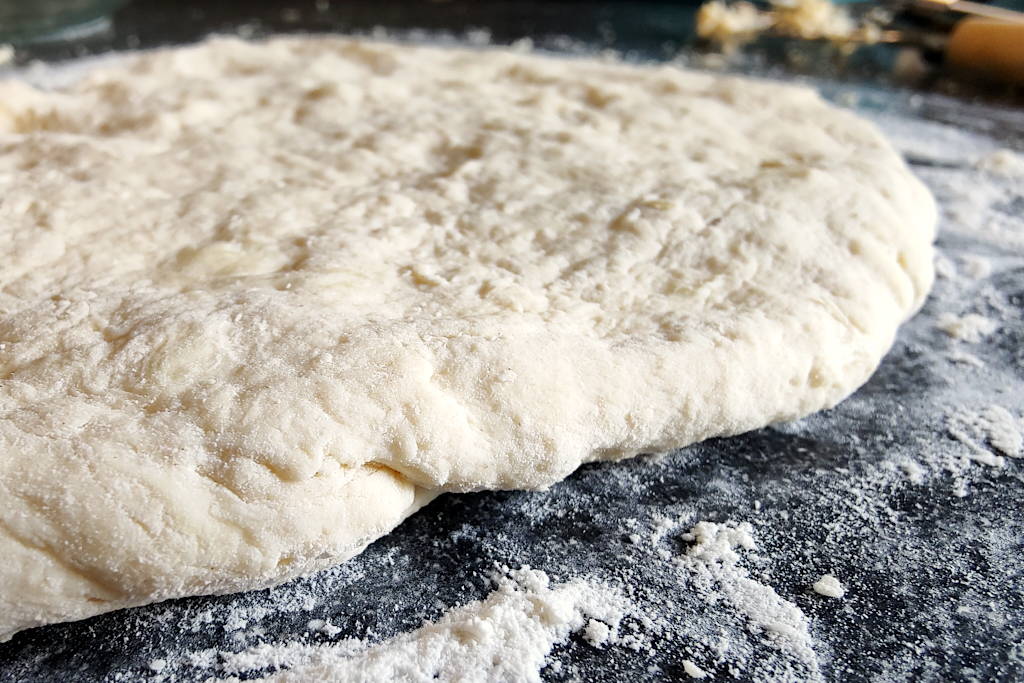Homestyle Buttermilk Biscuits
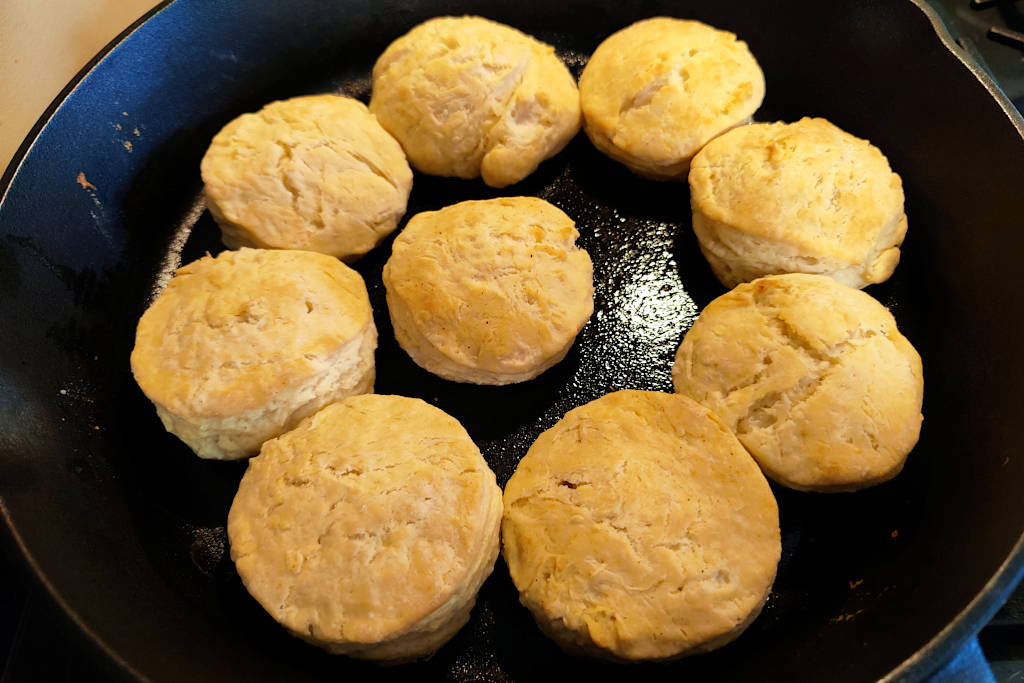
If you have never made your own buttermilk biscuits then you are surely missing out and I am glad you are here! These biscuits are perfect to serve alongside dinner, drizzle them with some honey, or break them up and ladle some hot sausage gravy over them to make hearty biscuits and gravy.
Equipment & Tools
Baking Pan: We will need a baking pan to bake the biscuits on, for this recipe I use a 12-inch cast iron pan as I find cast iron yields the best results. Using a metal cookie sheet lined with a silicone mat is my second go-to. A glass dish could also be used but isn’t recommended since the biscuits are unlikely to come out crispy on the bottom.
Measuring Cup(s) & Spoon(s)
Mixing Bowl: A large mixing bowl will be needed to mix up the dough.
Pastry Blender: Using a pastry blender makes easy work of cutting the butter into the dry ingredients. If you do not have a pastry blender you can either use two knives and slash them against each other, use your hands to squish the butter, or if you have a food processor you can pulse it a few times.
Danish Dough Whisk: This is a special whisk that is great for mixing up dough due to the different design versus a traditional whisk. This is optional of course but can save you from having sticky dough hands, plus it’s just a fun unique tool to have that is typically a conversation starter!
Biscuit / Cookie Cutter: To achieve that circular disc we will use a biscuit cutter or you could use a 2⅞-inch (73mm) circle cookie cutter.
Ingredients Needed
Shortening: Using shortening will help give the biscuits a crispy outer crust while keeping the inside moist but is optional.
Flour: Our family uses all-purpose flour which is one of the main ingredients for making these buttermilk biscuits. We will also need some flour for dusting and cutting out the biscuits.
Salt: Salt helps enhance the flavor of the biscuits.
Baking Powder: Baking powder is used to help with leavening.
Baking Soda: Baking soda is also used to help with leavening as it reacts with the acid in the buttermilk. If you are using milk instead of buttermilk, this should be omitted.
Butter: Adding butter to our biscuits will help create a moist, crumbly, buttery texture.
Buttermilk: Buttermilk is a main ingredient that gives the biscuits a more tender texture than if we were to use milk.
How to Make Homestyle Buttermilk Biscuits
The type of pan you use to make the biscuits will make a difference in the outcome. I use a cast iron skillet in this recipe but I have used a baking sheet in a pinch.
- Cast Iron – Bake at 450°F / 230°C, this is my favorite method.
- Baking Sheet – Bake at 450°F / 230°C, I like to use a silicone mat when using a baking sheet. It helps insulate the bottoms a bit to keep them from burning before the biscuits are done. If you don’t have a silicone mat, you could use two pans stacked to help insulate.
- Glass Baking Dish – Bake at 400°F / 200°C. I do not recommend using glass since the bottoms may not brown.
Preheat: Preheat the oven to 450℉ / 230℃ (unless otherwise noted above). If using a cast iron skillet, add shortening and place it in the oven to preheat.
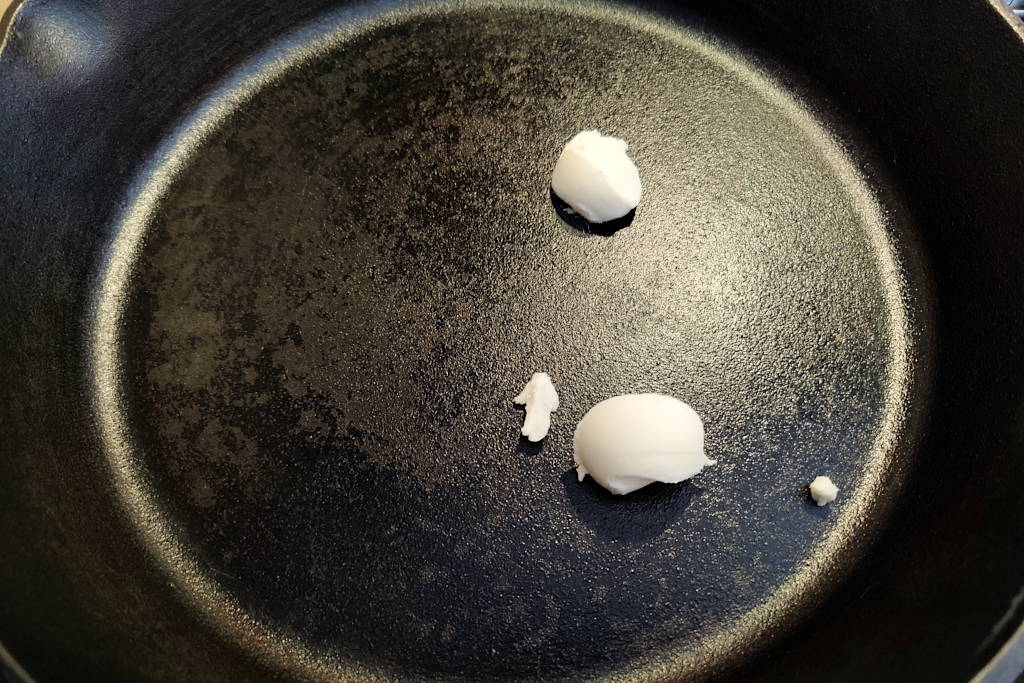
Whisk: Whisk the dry ingredients together in a large mixing bowl. Note: If you are using milk instead of buttermilk, leave out the baking soda. Baking soda reacts with the acid in the buttermilk to help with leavening, if milk is used then it is not needed.
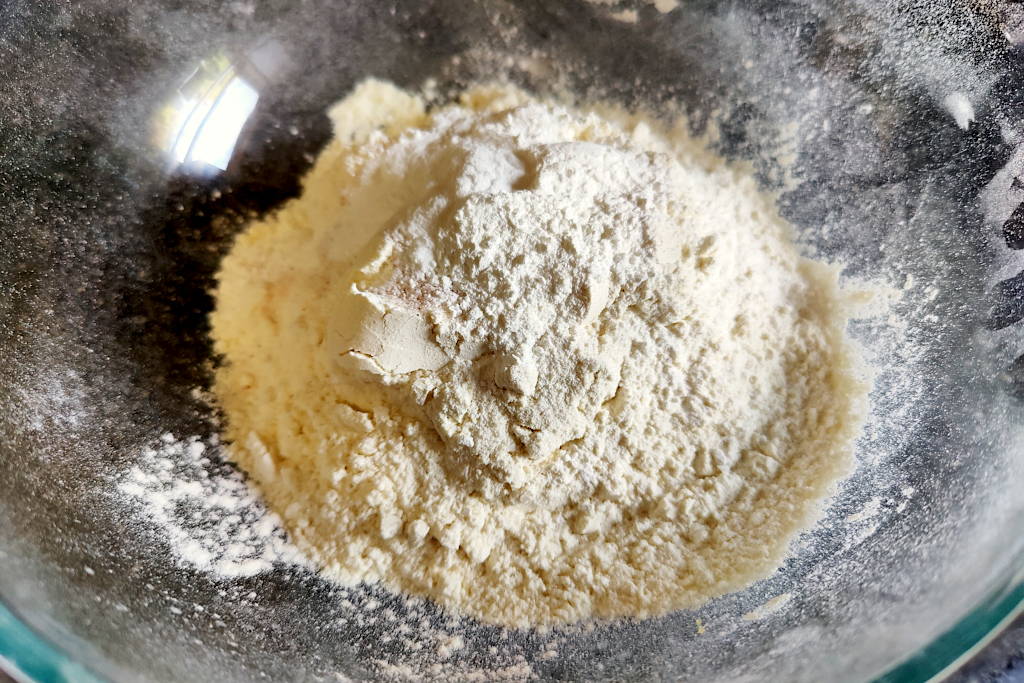
Cut in the Butter: Cut the butter into cubes then using a pastry blender, cut the butter into the flour mixture. If you do not have a pastry cutter you can either use two knives and slash them against each other, use your hands to squish the butter or if you have a food processor you can pulse it a few times.
Add Buttermilk: Gradually add the buttermilk (or milk) to the dry ingredients, if using milk you will need less of it since it isn’t as thick. Depending on your environment, you may not need all of the buttermilk or you may need more. The dough should be sticky but not too wet that you cannot handle it. If it becomes too sticky, simply add a bit more flour.
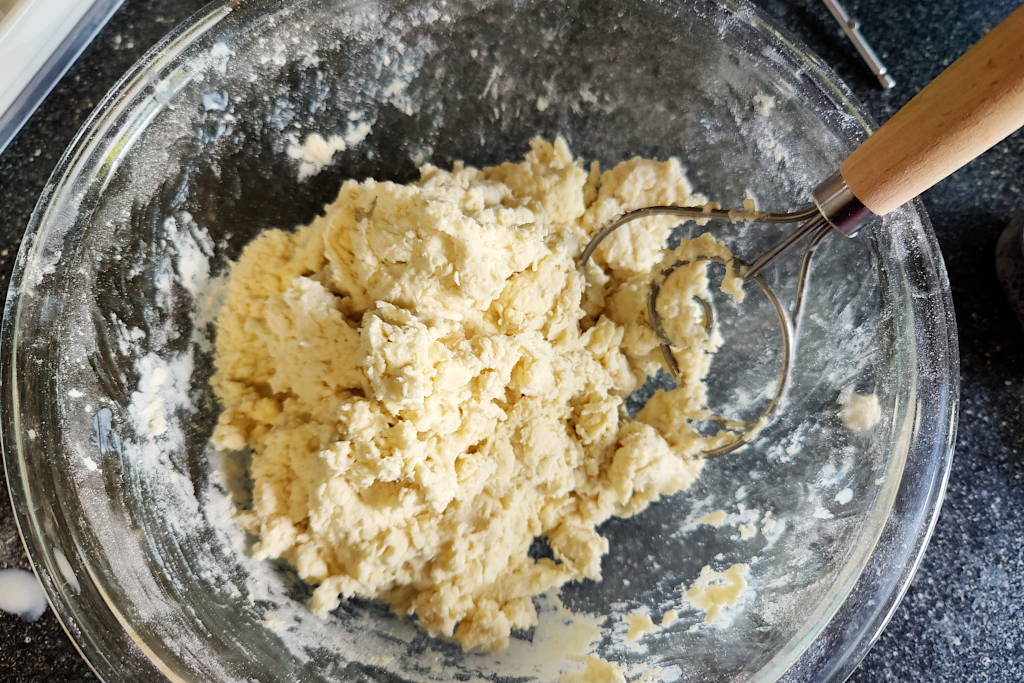
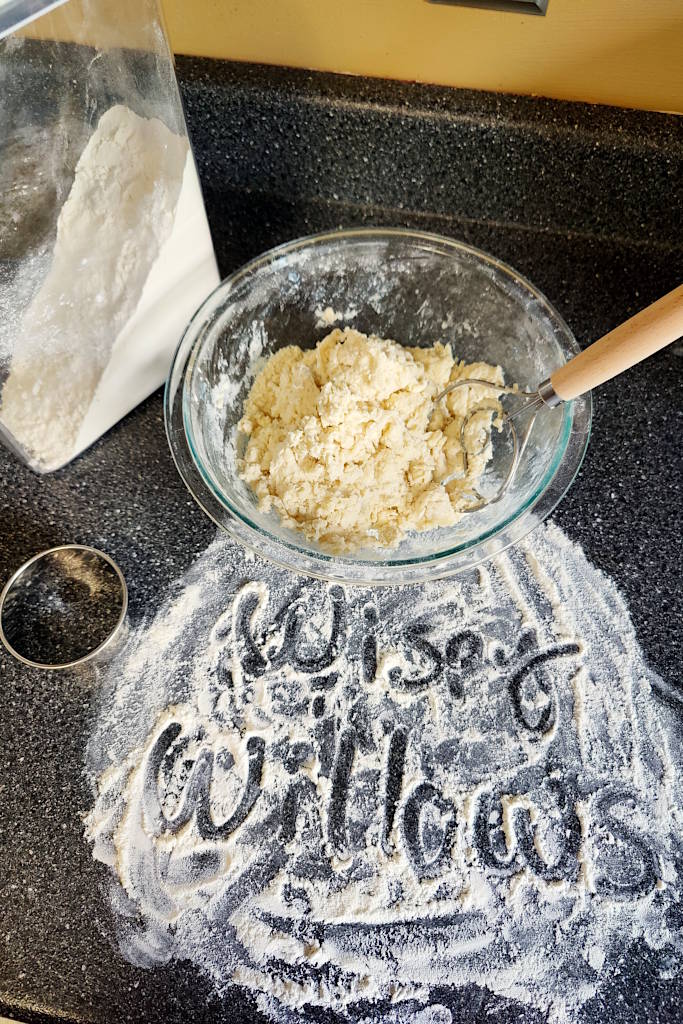
Shape Dough: Dust a clean, flat surface with some flour and scoop out the dough. Sprinkle some flour on it then using your hands, knead a few times into a ball then fold the dough over itself 2 – 3 times. Pat the dough to about an ½-inch in thickness. The thicker the dough, the higher the biscuits will be so feel free to adjust to your preference, you will just end up with more or less biscuits depending on thickness.
Cut Biscuits: Cut the biscuits out with a biscuit cutter, cookie cutter, or a cleaned-out empty can. Set the biscuits aside.
Shape & Cut Again: Take the dough scraps, knead them together, pat it out, and cut out some more biscuits. You should end up with 8-9 biscuits.
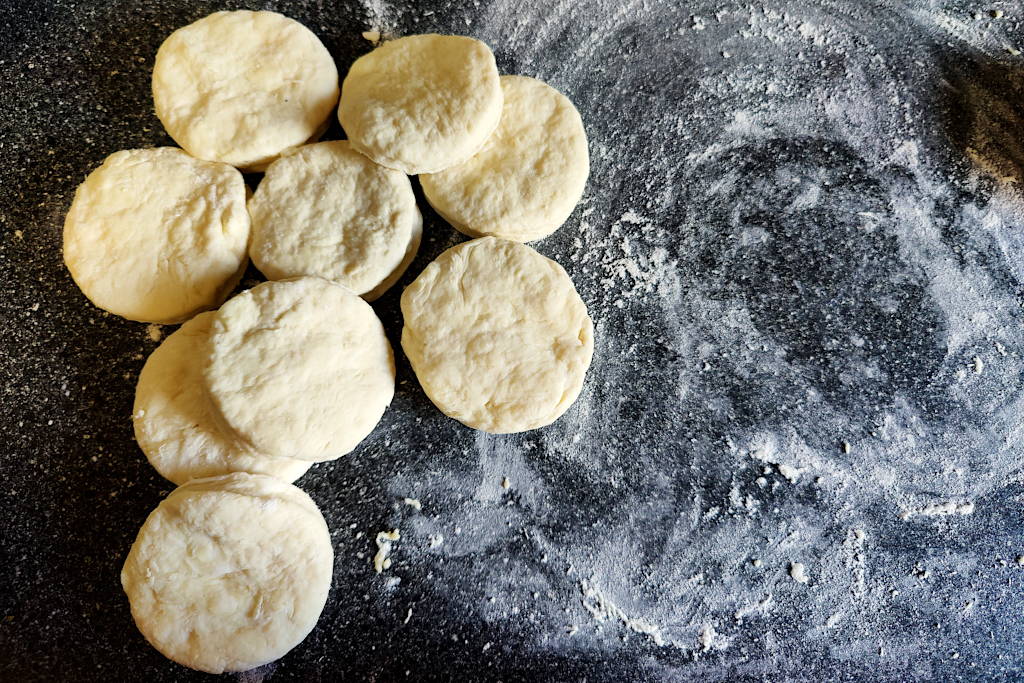
Place into Pan: Once they are all cut, remove the cast iron skillet from the oven and carefully place each biscuit into the hot oil. Carefully flip over each biscuit so both sides are coated in oil, this will ensure both sides get browned. You want to place them closer together but not touching. As they start to expand, they will be forced to expand upwards instead of outwards.
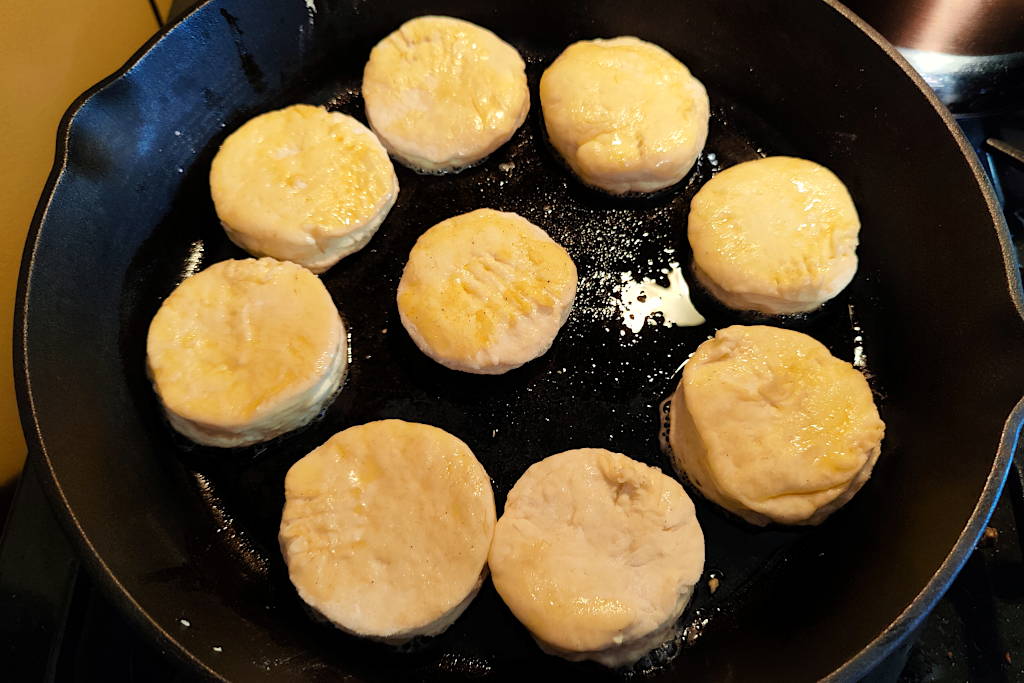
Bake: Carefully place the pan back into the oven and bake for 10 minutes.
Check Doneness: Check to see if they are golden brown and if so then remove from the oven. If they need more time, rotate the pan and keep an eye on them as they should be ready to pull within a few minutes.
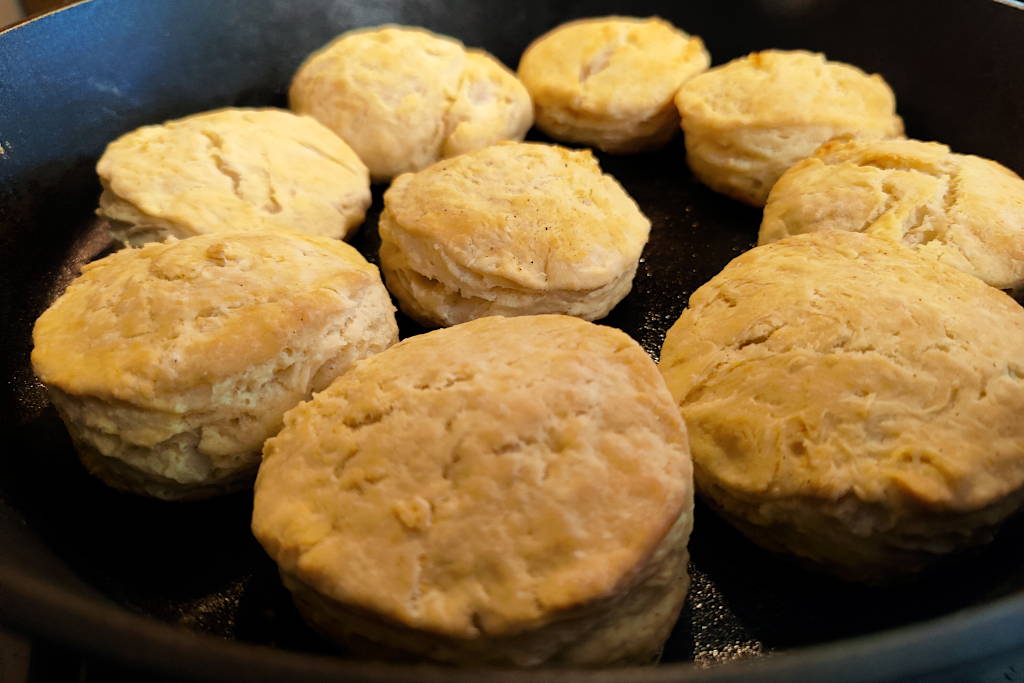
Storage
Place the buttermilk biscuits in an airtight container and store at room temperature for up to 3 days or in the fridge for up to a week.
Freezer: Wrap individual biscuits tightly with plastic wrap and place them into a freezer bag. They can be stored in the freezer for 2 to 3 months, thaw completely then reheat prior to serving.
Related Recipes
FAQ’s
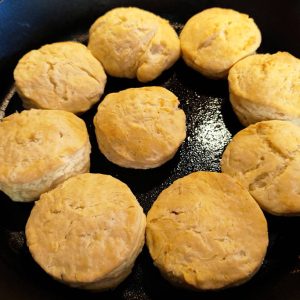
Homestyle Buttermilk Biscuits
*Note: Calories and cost is estimated, if provided.
Equipment & Tools
- Baking Pan (see instructions, below)
- Measuring Cup(s) and Spoon(s)
- Large Mixing Bowl(s)
- Pastry Blender or your hands, two knives or a food processor
- Danish Whisk or regular whisk
- Biscuit Cutter or round 2⅞-inch (73mm) cookie cutter
Ingredients
Pan Prep
- 1 Tbsp Shortening (optional)
Buttermilk Biscuits
- 2 cups All-purpose flour , plus extra for forming
- 1 Tbsp Baking powder
- ½ tsp Baking soda (omit if using milk)
- 1 tsp Fine sea salt
- ¼ cup Unsalted butter
- 1 cup Buttermilk (or milk, but will need less)
Instructions
- Pan Type – The type of pan you use to make the biscuits will make a difference in the outcome. I use a cast iron skillet in this recipe but I have used a baking sheet in a pinch.Cast Iron – Bake at 450°F / 230°C, this is my favorite method. A 10 or 12 inch skillet should work.Baking Sheet – Bake at 450°F / 230°C, I like to use a silicone mat when using baking sheets. It helps insulate the bottoms a bit to keep them from burning before the biscuits are done. If you don't have a silicone mat, you could use two pans stacked to help insulate.Glass Baking Dish – Bake at 400°F / 200°C. I do not recommend using glass since the bottoms may not brown.
- Preheat the oven to 450°F / 230°C (unless otherwise noted above). If using a cast iron skillet, add 1 Tbsp Shortening and place it in the oven to preheat.
- Whisk together 2 cups All-purpose flour, 1 Tbsp Baking powder, 1/2 tsp Baking soda, and 1 tsp Fine sea salt in a large mixing bowl. Note: If you are using milk instead of buttermilk, leave out the baking soda. Baking soda reacts with the acid in the buttermilk to help with leavening, if milk is used then it is not needed.
- Cut ¼ cup Unsalted butter into cubes then using a pastry blender, cut the butter into the flour mixture. If you do not have a pastry blender you can either use two knives and slash them against each other, use your hands to squish the butter or if you have a food processor you can pulse it a few times.
- Gradually add 1 cup Buttermilk (or milk) to the dry ingredients, if using milk you will need less of it since it isn't as thick. Depending on your environment, you may not need all of the buttermilk or you may need a bit more. The dough should be sticky but not too wet that you cannot handle it. If it becomes too sticky, simply add a bit more flour.
- Dust a clean, flat surface with some flour and scoop out the dough. Sprinkle some flour on it then using your hands, knead a few times into a ball then fold the dough over itself 2 – 3 times.
- Pat the dough to about an ½-inch in thickness. The thicker the dough, the higher the biscuits will be so feel free to adjust to your preference, you will just end up with more or less biscuits depending on thickness.
- Cut the biscuits out with a biscuit cutter, cookie cutter or a cleaned out empty can. Set the biscuits aside.
- Take the dough scraps, knead them together, pat it out, and cut out some more biscuits. You should end up with 8-9 biscuits.
- Once they are all cut, remove the cast iron skillet from the oven and carefully place each biscuit into the hot oil (if using). Carefully flip over each biscuit so both sides are coated in oil, this will ensure both sides get browned. You want to place them closer together but not touching. As they start to expand, they will be forced to expand upwards instead of outwards.
- Carefully place the pan back into the oven and bake for 10 minutes.
- Check to see if they are golden brown and if so then remove from the oven. If they need more time, rotate the pan and keep an eye on them as they should be ready to pull within a few minutes.
Storage
- Place biscuits in an airtight container and store at temperature for up to 3 days or in the fridge for up to a week.
- Freezer: Wrap individual biscuits tightly with plastic wrap and place them into a freezer bag. They can be stored in the freezer for 2 to 3 months, thaw completely then reheat prior to serving.
Subscribe
Enjoying our content? Stay up to date on all of our latest posts, subscribe now to receive an email every Friday with our new posts of the week!
